Roots
“Root determines fruit.”
–Buddy Hoffman
At the height of the Civil War during an army revival meeting, two brothers from Atlanta committed a solemn prayer to God: “If you spare our lives in this war, we ask that you would provide pastors to every generation from these loins.” They both survived, and in the following decades they and their descendants planted many churches in Atlanta that still exist today. Five generations later, Buddy Hoffman was born into the same bloodline. He grew up, went to Bible college, and, upon graduation in 1976, married his sweetheart Jody. Two weeks later they drove to Boise, Idaho, to plant a church because Buddy had heard it had the fewest churches of any place in the U.S. His plan was simple: teach the Bible and make disciples. For the next seven years, that church grew steadily beyond its humble beginnings as Buddy taught from the Scripture and discipled leaders. While there, Buddy and Jody learned that Boise had once been the home to many flourishing churches, but a failure to engage the next generation had led to significant loss of influence in the valley. For the Hoffmans, this only underscored the biblical mandate that every generation has the responsibility to reach the next generation.
Then one night in 1983, God woke Buddy with what he described as a very clear calling: “Buddy, I want you to go back to your hometown to start a church.” So they handed the Boise church to its leaders (it continues to meet today) and drove back to Georgia. That fall, Grace Fellowship Church held its first meetings in a daycare center in Tucker, a suburb just outside Atlanta. But even though the location had changed from Boise, the strategy had not: Buddy taught the Bible every Sunday, and the church mission statement was “Making disciples beginning with my neighbor.” Within a few years, Grace purchased a small building in the town of Lilburn very near Parkview High School in order to work with students and families there.
Seed
Rooted and Renegade (1983-1997)
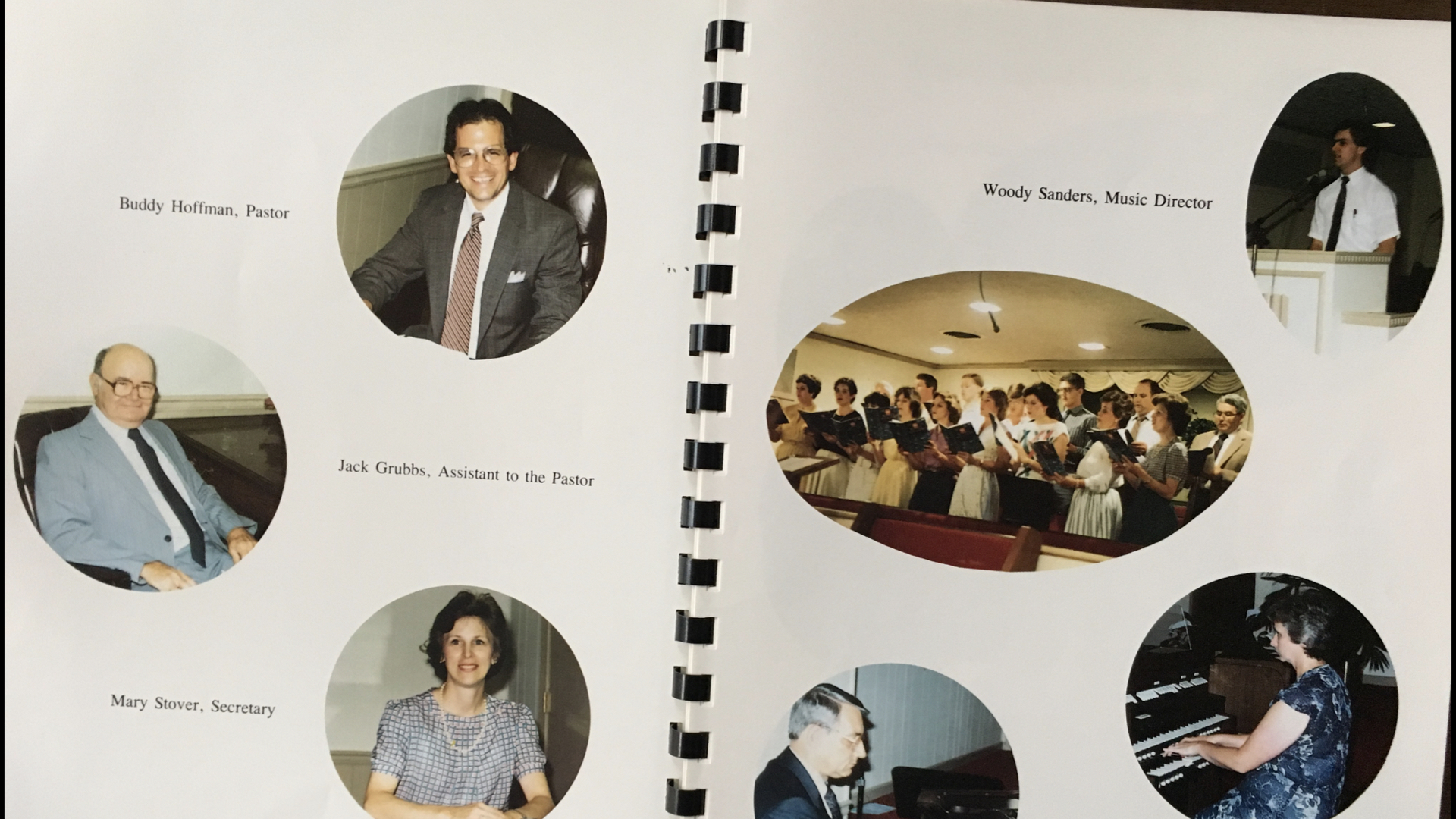
One of the document treasures from that time is the 1986 church directory. The first page reads: “Three years ago the Lord laid upon the hearts of a handful of people to form a church that was centered on God’s Word and committed to His direction. At the same time, the Lord had spoken to Buddy Hoffman about coming back home (to Atlanta) to establish another church. It is nothing short of miraculous what God has done since that first meeting at the Northlake Hilton Inn with twelve families three years ago. Then some six months later, after holding our services in a Day Care Center among the aroma of dirty diapers, the Lord allowed us to purchase this property [in Lilburn]. It is wonderful to see how God has moved in the hearts and lives of our people. As the songwriter so aptly put it – ‘Surely the Lord is in this place,’ for the sweet spirit that dwells among our family. Praise God from whom all blessings flow!”
Even at this early stage you can recognize some of the Grace roots that continue to bear fruit today: centering on God’s Word, an exclamation of worship, and heart for family. But this short history also reveals clues that Grace was going to be a different kind of church at the time because of its pursuit of authenticity and its conviction that God still speaks.
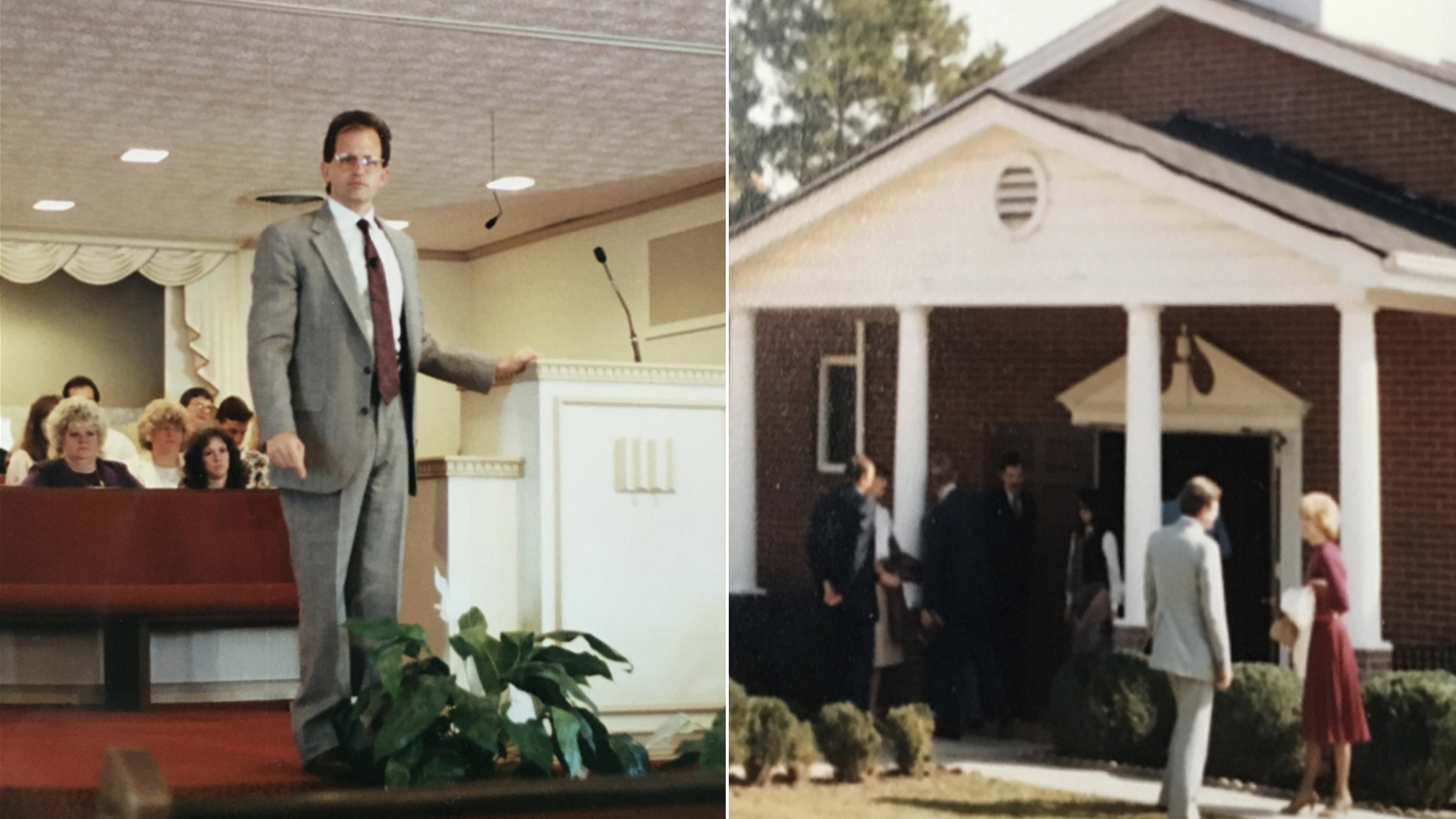
One of the struggles of the church in the early 80’s was determining just what kind of church Grace was going to be. Buddy told the story from those days of a young man who would ride up on his motorcycle just before church began (or, often, after the service had begun). He usually sat alone in the back. He wore dirty jean shorts and tee shirts about beer. Soon several of his friends began to come as well. There was a group of people troubled by the visitors, and one of them called Buddy to express “concern” about this young man. He asked, “What do you think of the group of young men in the back wearing shorts?”
“Who do you mean?” Buddy replied.
“You know, the fellows who ride the bikes.”
“Hmm… What are their names?”
“I don’t know.”
“Where are they from? Are they in college? Do they have jobs? Where do they live?”
“I don’t know.”
“So the only thing you know about them is that they wear shorts? You are more interested in what they have on than if they understand the good news? I’m not worried about them, I’m worried about you.”
Tree
DNA and Disciplemaking (1997-2005)
The seed grew, slowly at first, but that’s to be expected when you are committed to making disciples… the growth goal is not quick addition but rather exponential multiplication. As the church grew, the community God gathered began to flesh out the DNA of the church, especially our heart for the next generation.
One of the defining stories for the church began in 1994, when Art and Denise Smith moved their family from Florida to Gwinnett. They had recently become part of Grace when their son Jesse was diagnosed with a very serious form of cancer. He was a student at the time, and his family was relatively new to the church, but whenever he went to the hospital, it seemed like the entire Grace community showed up—the Children’s Hospital foyer at Egleston was crammed with people Art and Denise had barely met.
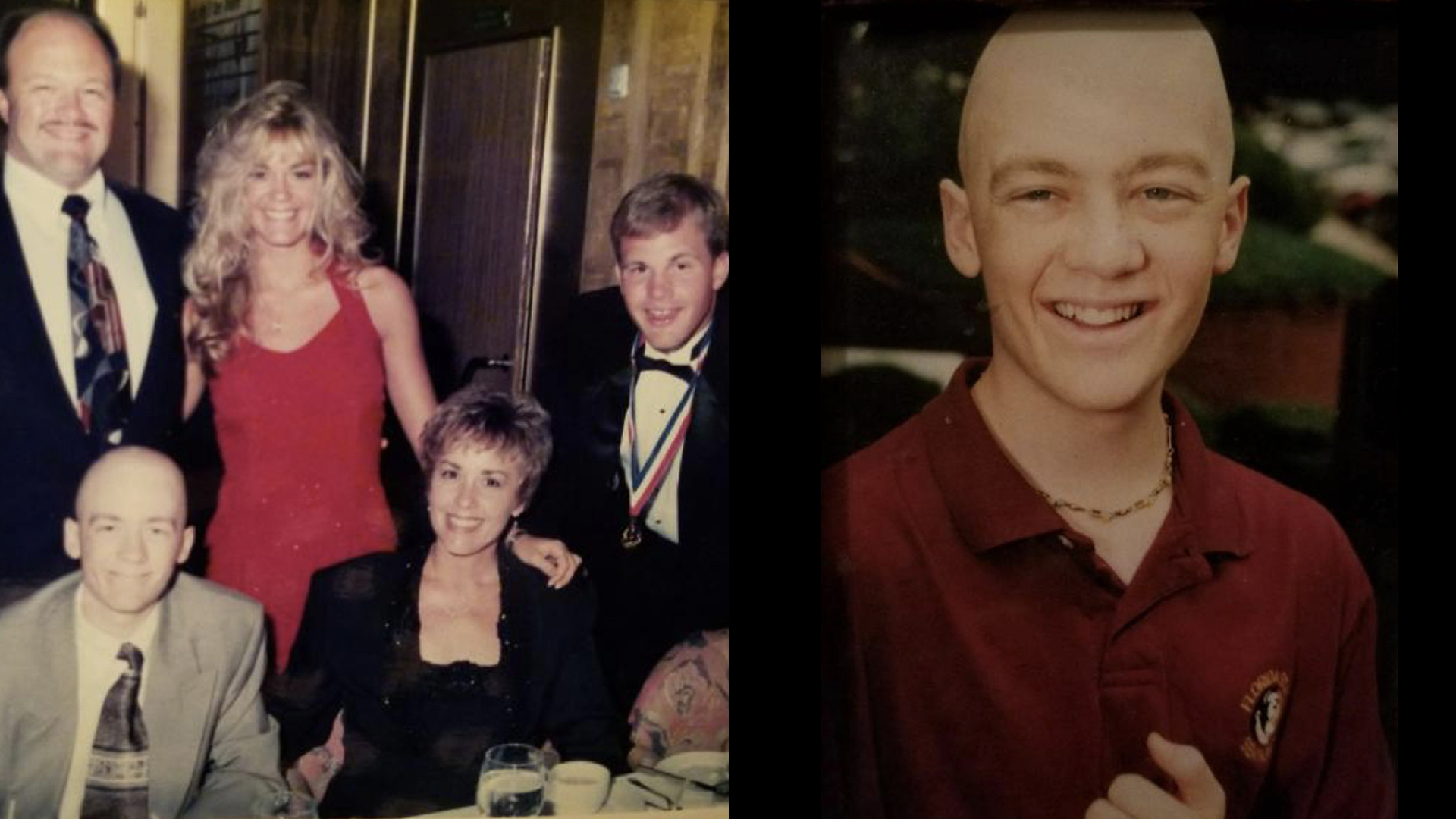
When Jody and some of the other lades in the church learned that Jessie needed blood transfusions, they led the charge to start people eating well so that they could donate healthy blood for Jessie. Grace’s DNA was in the next generation, literally.
Jessie was an amazing young man. He shared his faith with everyone–doctors, nurses, visitors–and whenever someone said they would pray for him, he would say, “Why don’t we pray right now.” Most of the time, he was confident God would use his illness for glory, even though the prognosis became increasingly dire. One particularly dark night in the hospital, Jessie was with his mom, and they wept together as Jessie cried out and prayed desperately that even one person could come to know Jesus through his suffering.

After three years of hard fighting, Jessie died in 1997. The memorial was at home plate of the Parkview Baseball field, just as he had asked, and thousands showed up. At the end of the service, they gave an invitation that anyone who wanted to accept Christ meet out in centerfield. And there was revival—hundreds of people came to faith, many of whom are still spiritual leaders around Grace and beyond today. It was God’s beautiful answer to Jessie and Denise’s desperate prayer.
Moreover, Jessie’s life and death was a stunning awakening to the potential for students’ capacity to lead. Perhaps part of Grace’s efforts to disciple the next generation required a paradigm shift that would focus on empowering students into positions of real spiritual responsibility. And so a few months after Jessie died, Buddy sent Denise (who now leads Peace of Thread, a 501c3 non-profit that empowers refugee women), and Joy Gilliam (another key mother who continues to be a part of Grace today) down to Florida, where they had heard about a youth group built on empowering students to lead other students. When they returned, they began to implement the Living Under Grace (LUG) model they had seen, and not long after that Randy and Anita Rainwater came up from Florida to lead the Grace student ministry and equip high schoolers to disciple middle schoolers.
This idea was radical at the time—and at first the people of Grace were skeptical! “It’s going to be messy,” they said. And it was! And it continues to be messy! But it was also incredibly fruitful. The buildout of the discipleship DNA took another massive step forward when Buddy and Jody chose to open their basement to two fresh-out-of-college kids—Tyler Thigpen and Brian Krawczyk. The Hoffment, as it came to be known, would churn out a generation of top-flight leaders who gained life-on-life experience from walking with Buddy and Jody through the various ministry responsibilities and challenges of leadership.
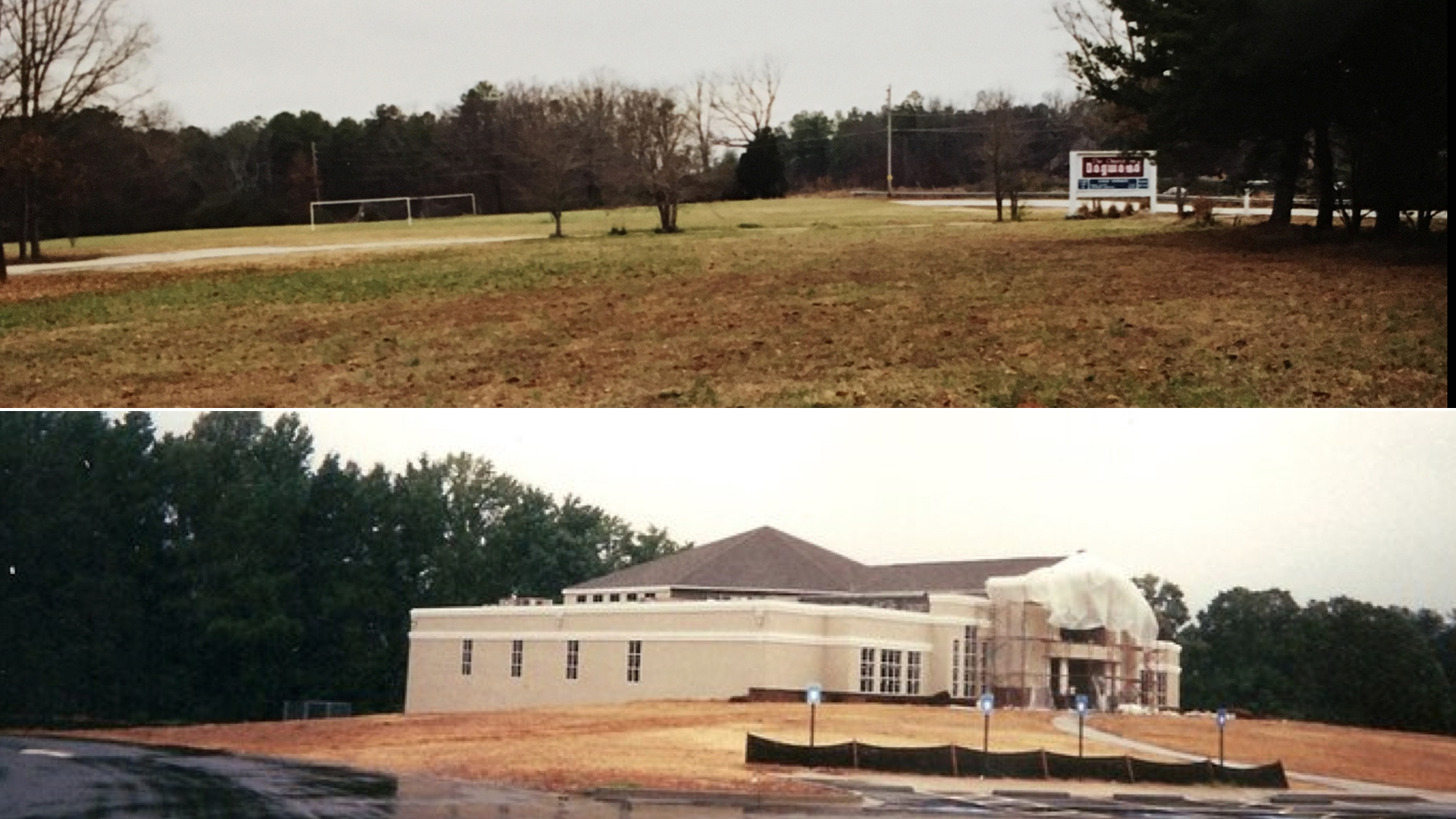
By 2000, Grace had outgrown its Lilburn location. So the community found an ideal location next-door to Brookwood High School and within six miles of seven other major Gwinnett high schools. Grace raised funds, bought the land, built a building and moved in as soon as they could to accommodate the growing congregation.
Function trumped form, and people would bring tennis balls to put on the feet of their folding chairs because the lack of carpet in the room made for a caucophany of squeaks and scrapes during the first Sundays in the new building. In those year, Grace grew like crazy. At the time of the move in 2000, weekly attendance was just under 1000. By 2005, attendance had grown to more than 2500, which triggered weekly traffic jams and the annexation of the new building’s office and classroom space into the main auditorium.
During these years, a sense of God’s heart for the nations had been growing in the life of the church as well. During the late 1990s, several key families came along and began inviting the church to be part of short-term projects overseas, and Grace sent its first short-termers on “Project Build” trips to Jamaica, El Salvador, and part of South America. The next generation DNA dovetailed beautifully with the nations component when Grace began sending students to Peru for the summer to serve and be discipled.
But then, just a year after moving to the Snellville location, the September 11 attacks on the World Trade Center not only changed the world but also the nations focus of our church! A few days after the terrorist attacks in New York, Grace mobilized a team to go to New York to pray and minister to the grieving city.

Through an unexpected (miraculous?) sequence of events, the team ended up working at Ground Zero, and while there, Buddy experienced a profound sense of calling when God pressed him with a challenging question: “Buddy, is the Muslim world the enemy or the prize?” Buddy responded: “If you can use a local church in Snellville, Georgia, to help with your response to the Muslim world, we’re in.”
View Buddy’s talk on reaching the Muslim world.
That simple prayer set us on a collision course with Islam. Our first five years of efforts to talk about Jesus to Muslims were defined by apologetics and polemics that, unfortunately, generated far more frustration than fruit.

But our failures forced us back to Scripture, and there we discovered Jesus’ language of the Kingdom of God. It was a revelation for our entire staff team. Buddy preached something like 35 sermons in a row about the Kingdom of God, and we started putting the word “Kingdom” before any and every ministry event: “Kingdom Coffee Hour,” “Kingdom Dance Party,” “Burger King and Kingdom.” Our encounter with the Muslim world reshaped our understanding of what it meant to be citizens of Jesus’ Kingdom and invite others into it. Out of that time, we developed Jesus and the Qur’an as a Grace family training intensive and pursued partnerships in Jordan, Kosovo, Israel/West Bank, India, Benin, and beyond.
Fruit
Mega and Mobilized (2005-2013)
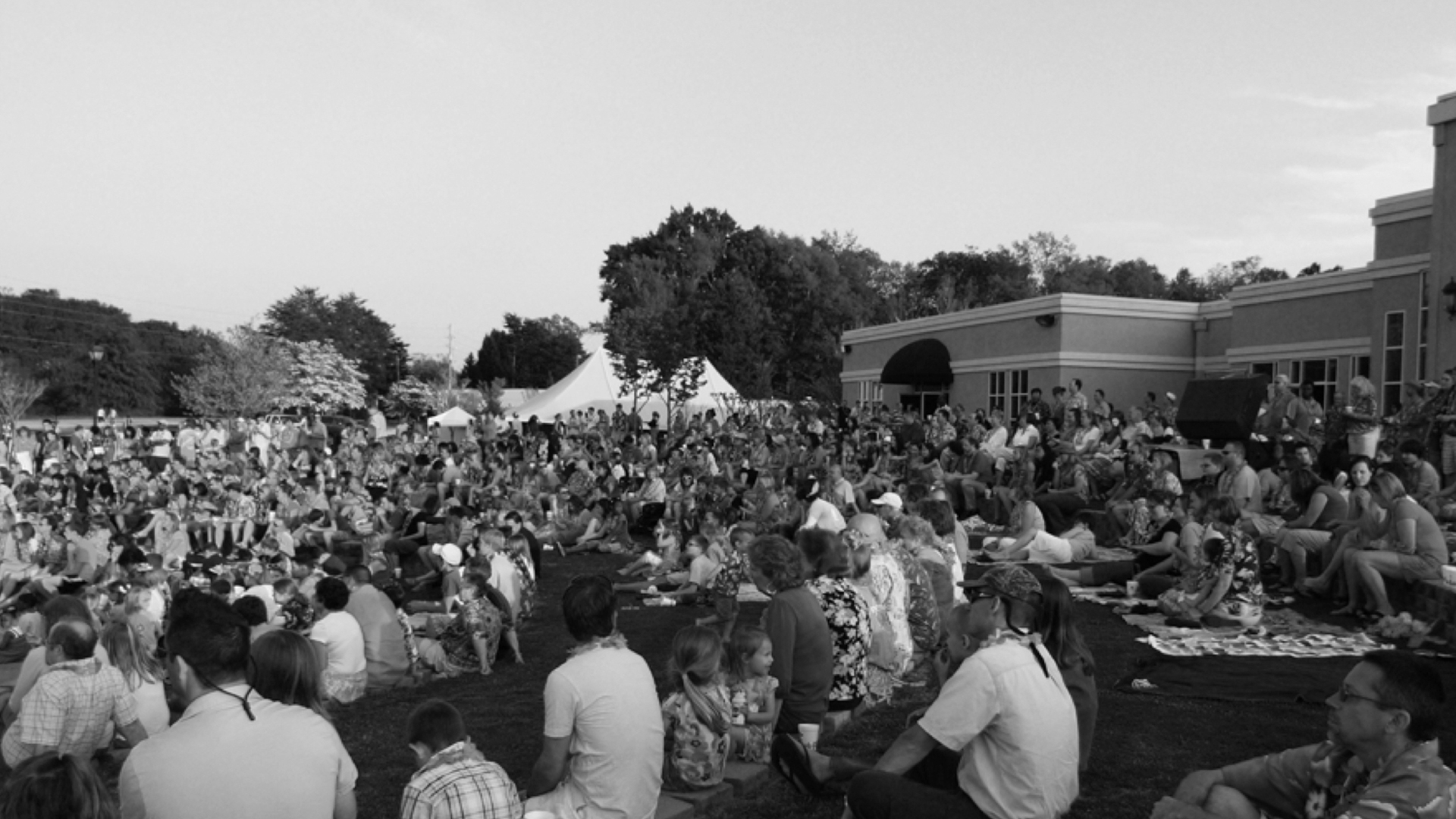
Even though some people left the church because they did not appreciate our turn toward the Muslim community, “space at Grace” continued to be an issue. By the mid 2000s, weekly attendance regularly exceeded 3,300, and it was clear the Snellville building was insufficient for the demand. What was the solution? Buddy and the elders explored purchasing other buildings in the area, building a giant auditorium on our existing land, and every other possibility they could imagine. Unfortunately, none of these solutions materialized.

Another solution, however, did. What was then called West Merritt Baptist church on State Street in Midtown approached us with an invitation to replant a Grace church in their facility that could engage the Muslim community and the students of Georgia Tech who lived (literally) around the corner. And so, in 2005, we launched Grace Midtown, with Buddy driving into the city on Sunday evenings to preach. Within a couple of years, Buddy was bringing a young Matt Reynolds with him, and by 2007 Matt was the first lead pastor apart from Buddy to lead a Grace church.
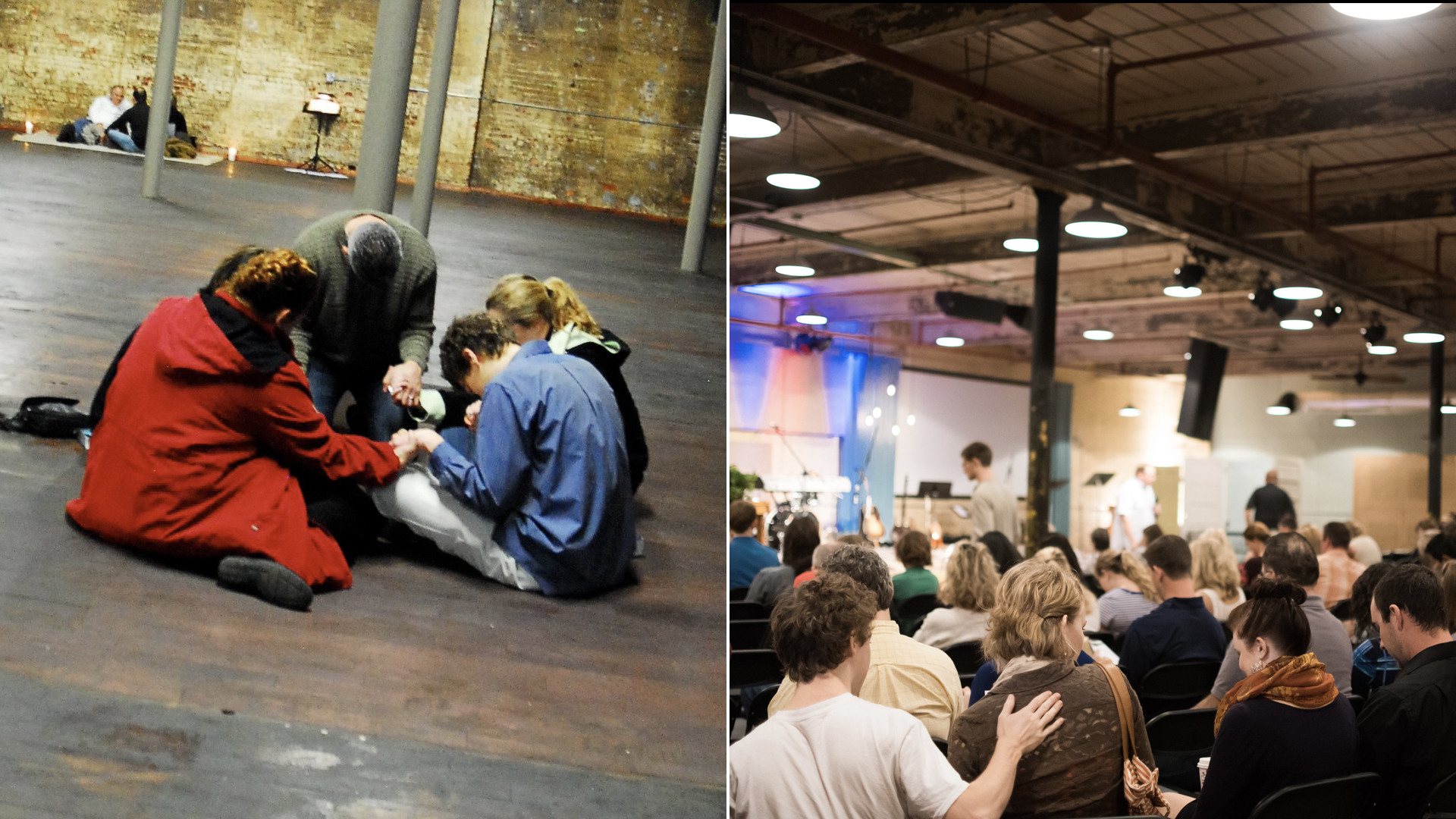
In 2010, then, another group of families who attended Grace Snellville but lived in Monroe said, “We love Grace, but we have a dream of walking to our church in our own community… and we happen to own this old cotton mill within walking distance of downtown Monroe. Any chance we could plant a Grace church out there?” And so we prayed and visited the location, and even our children gathered on the scarred wooden floors of the old milled to ask God about his heart for that community. Not long after, we planted another Grace church in Monroe. It was pioneered by Buddy and Jody’s son, Gabe, and then carried on by Brian Krawczyk (one of the first Hoffment leaders!) and his wife Sadie.
At a leadership level, we began to observe that these two trends–overcrowding at the original church while receiving invitations to plant new churches–coalescing into a new strategy. Grace Snellville had grown to what many would consider mega proportions, but could really grow no further. After these years, Buddy and the elders eventually realized, “You know what, if we had $10 million dollars now, we would not build that giant auditorium at Snellville. We would much rather to put it toward planting new churches in new communities!”
And so by this time, there was much fruit… that had then been replanted… and we could begin to sense the hand of God moving us to a new season.
Forest
Multiplying and _____________ (2013- )

In January 2013, leaders from Monroe, Midtown, and Snellville gathered on Martin Luther King, Jr. weekend at the Doubletree Hotel in Tucker to refresh our vision and equip our people. During one of the group sessions, Jody Hoffman shared something absolutely astounding. During the leader summit, she realized that the Northlake Doubletree was, in fact, the exact same Northlake Hilton Hotel where Grace Fellowship Church’s very first organizational meetings had been held 30 years before. Everyone in the room was stunned—it felt like one of those moments in the Bible when God’s sovereign hand appears and everyone realizes he really has been stewarding the story with incredible wisdom.
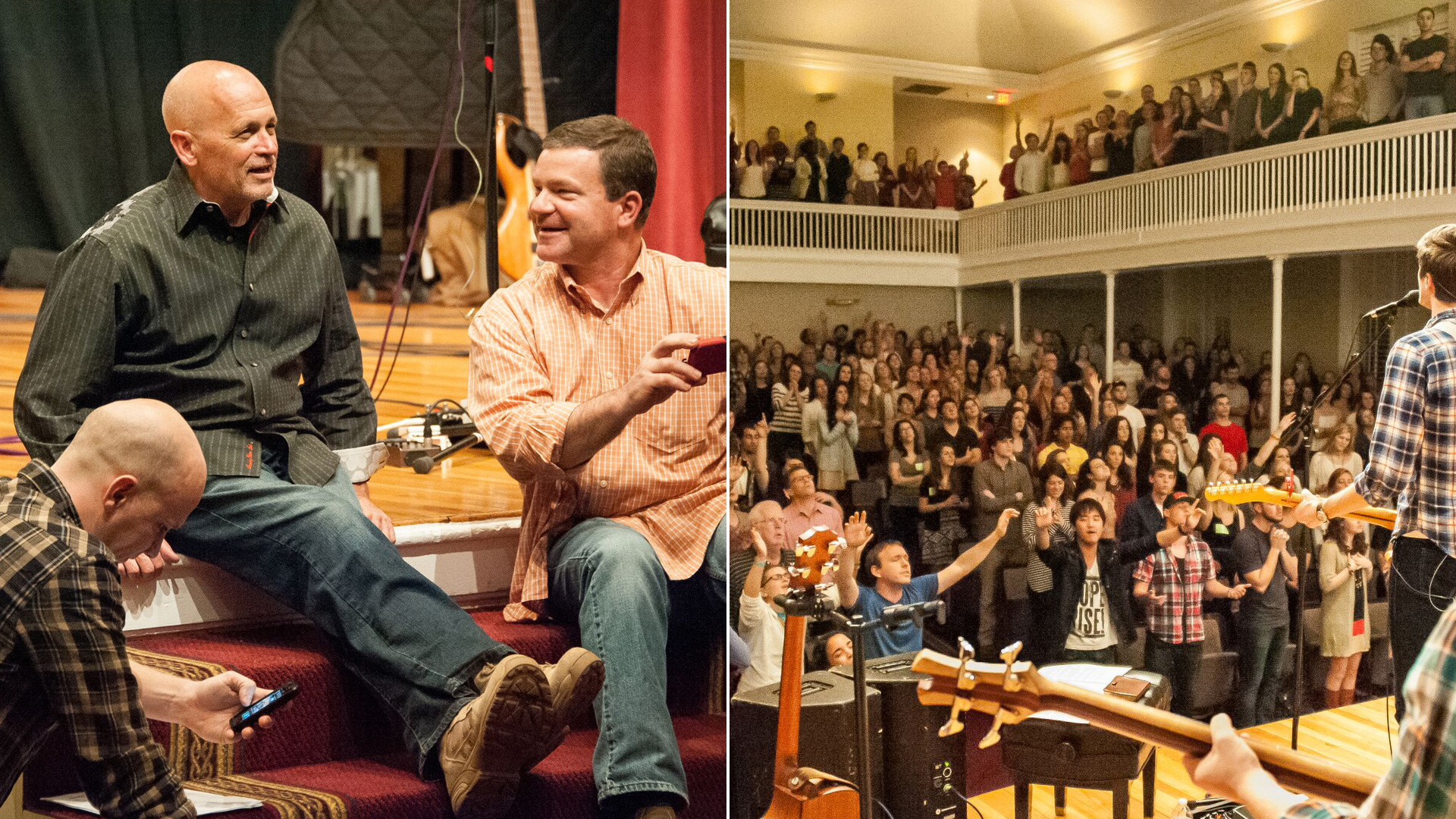
This recognition galvanized our resolve to continue planting new churches, and the next community where we sensed God at work was the college town of Athens. So many of the young people who had been discipled at Grace were going on to the University of Georgia, and we sensed a call to plant a local church there. Another one-time Hoffment leader, John Raymond, now pastors that community along with his wife Danielle.

Only a few months after all these things, Buddy experienced a genetic cardiac catastrophe–a dissection in all his major arteries that should have ended his life. When the doctors took him back to surgery, they told him, “Say goodbye to your family, because you have no odds of surviving–most people don’t even make it to the hospital alive.” The entire Grace Family braced for the death of our founding leader. Many have heard the story, but God miraculously (and graciously) spared his life.
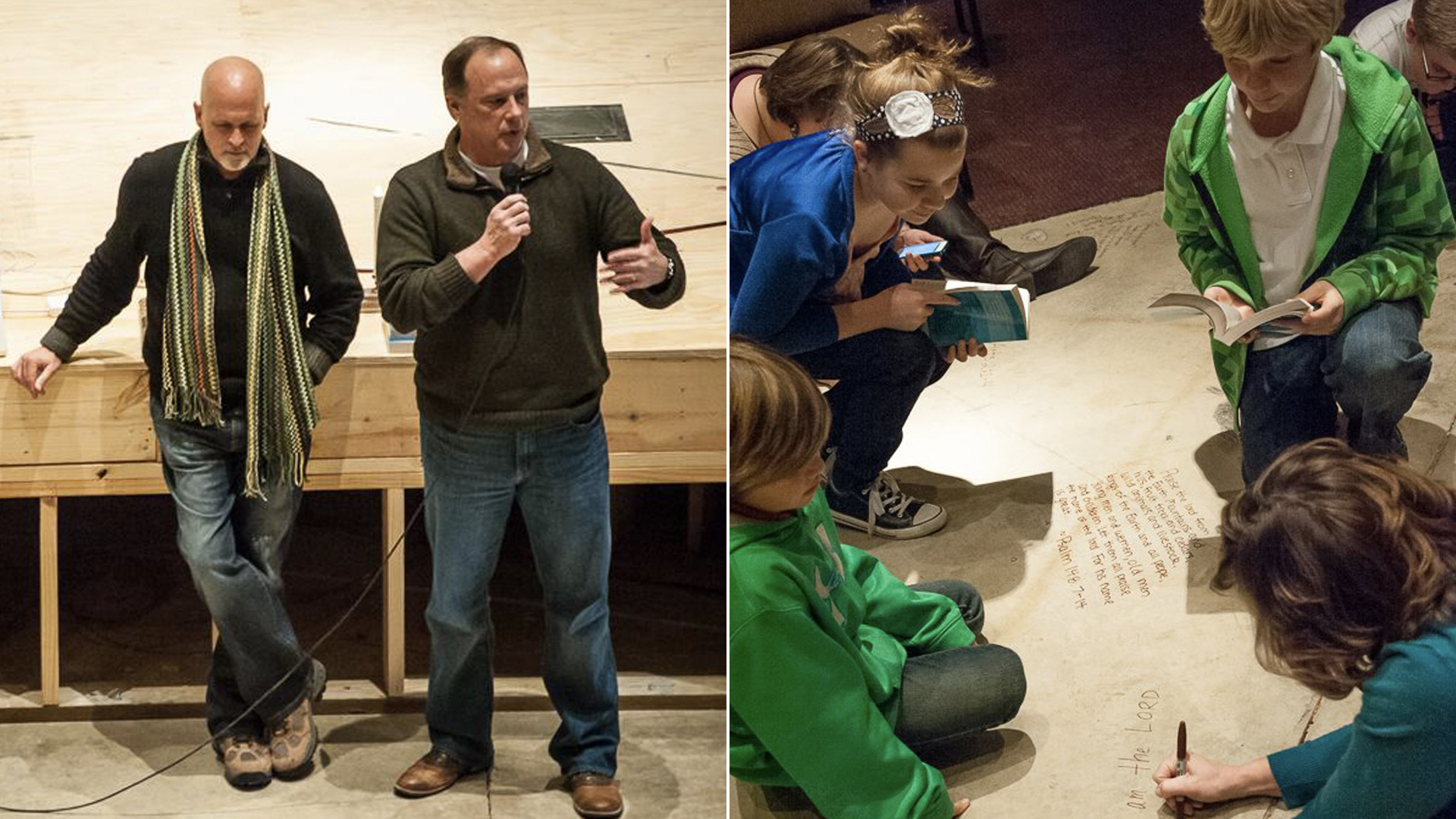
Nonetheless, Buddy’s recovery lasted almost six months, and during that time Buddy began to recognize that God might have begun a significant transition in the Grace Family. He returned to Snellville’s pulpit for just a few months before God opened another opportunity in Lawrenceville to plant a church, and at the beginning of 2014 Buddy and Jody did not just send leaders but rather went themselves to start the new work along with a number of people who attended Grace Snellville but lived in the Lawrenceville/Grayson area and were excited to be part of reaching their own neighborhoods more directly. Jon Stallsmith (another “Hoffment” guy) and his wife Amy responded to Buddy’s invitation to remain and pastor at Grace Snellville.
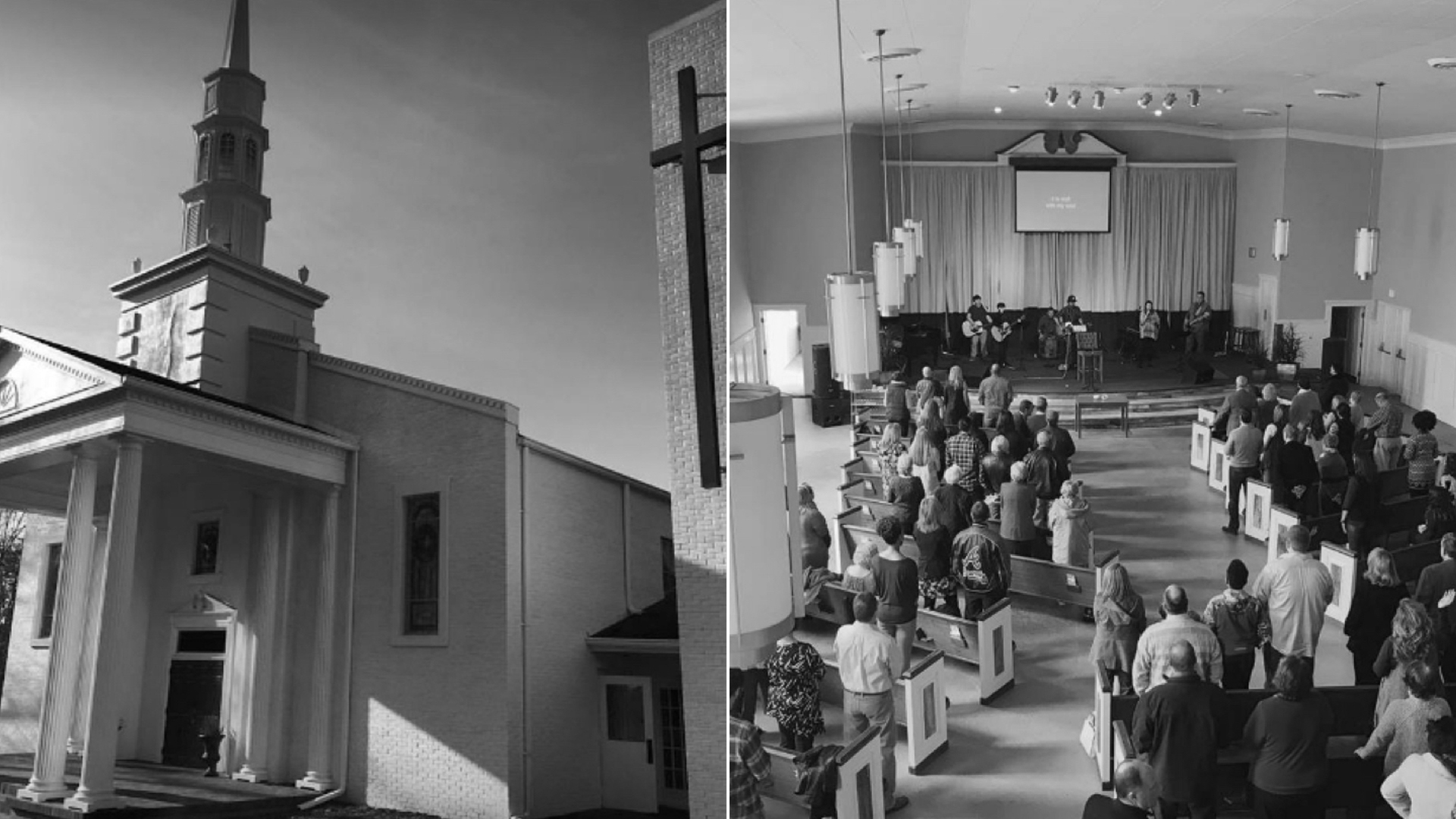
But God had not finished opening doors. While Buddy was recovering at St. Joseph’s hospital, his hospital room overlooked the northwestern suburbs of Atlanta, and Marietta specifically. With little else to do, Buddy prayed for the community he saw. At the same time, a vibrant community of young families had moved to Marietta from Midtown when they had children. This community loved being a part of Grace Midtown, but the distance was becoming too great to maintain healthy relationships, especially with their rapidly increasing number of young children. So they met in their homes, often with the basement or extra room overflowing with up to 20 or 30 rambunctious representatives of the next generation. Eventually, these leaders approached the elders of the Grace Family and said, “We need a Grace church out here in Marietta.”
But how could we respond? We had no plans, nor did we have an apparent leader ready to step into the opportunity. Then, at the 2015 Leader Learning Community, God opened a door and established a connection that enabled us to receive what was once Holt Rd. Baptist Church and plant Grace Marietta there. Once again, Buddy and Jody pioneered the new work once they had setup Randy and Anita Rainwater–who had led the student ministry at Grace Snellville for nearly two decades–as the leaders at Grace New Hope. Buddy and Jody were just getting the fledgling Marietta church off the ground when Buddy passed away. Fortunately, God brought Ben and Sarah Hardman to Atlanta to pastor that church.

At the same time, Grace Midtown was mobilizing some of their best leaders–Chris and Jessica Moerman–along with folks from each of the other Grace churches, to plant Grace Capital City in Washington DC. In what would become an annual rhythm for the Grace Family, we gathered at the Tabernacle downtown on Pentecost to launch the Grace Capital City community, which now gathers weekly with a growing number of several hundred worshippers just off Dupont Circle in the District. Beautifully, Grace Capital City is a 3rd generation plant, essentially a grandchild from the original Grace community.
So what do we make of this story that continues to be written?
First, Grace is not the story of buildings being built or given
Nor is Grace the story of a master plan of world discipleship domination played out perfectly—in fact, at our lead pastor retreat this summer we realized that we actually aren’t that good at planting churches systematically… but we have been pretty good at raising up leaders and communities that are rooted and durable enough to plant churches in spite of adverse conditions.
Buddy would have told you (and Jody will tell you) that Grace is certainly not just their story.
Rather, Grace’s story is the story of God working through people…
Throughout this history, so many of the crucial moments—the hinge points—in the history of the Grace family begin with, “And then this family…” Or “And then these people…”
What was initially a great problem at Grace Snellville–overcrowding–became the doorway to God’s solution: sending people out. Today, by the grace of God, each of the churches is growing. (Here is one fact for which we are incredibly grateful: in 2017, the year that our founding leader died, every single church in the family increased its tithes and offerings over 2016). We feel that we are living an amazing testimony to the generosity of our communities and to the way Buddy and Jody led for the sake of the next generation.
And so this story is a story of God’s people, rooted and more than a little renegade… sharing the DNA of Disciplemaking, embracing the challenges of growth and multiplication, continually reupping and saying, “Yes, we will (as the old 1986 directory put it) follow where God leads”
Grace has never been about coming to church.
Grace has always been about being the Church.
But all of this history begs a crucial question: What kind of church and church family will we be moving forward?
The roots here are deep, the trees are growing, and the fruit is good…
In many ways, Grace has become a fruitful forest. We have entered into a season of multiplying, but after the death of Buddy, how will the trees of the forest relate and cross-pollinate?
In 2018, we are entering a crucial chapter in the life of the Grace Family. As we stand at the threshold of a new season… what kind of family will we be?
Together with God, we write the future.
